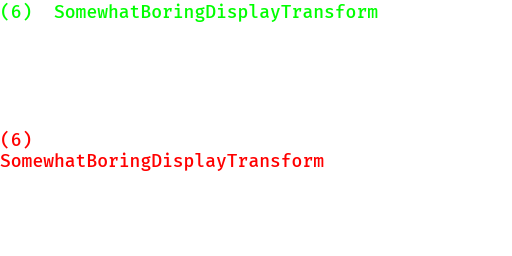Using the width of a buffer as the constraining width of another buffer does not produce the same result
See main.rs
cargo run (see asserts in code)
or
cargo run --features render to generate an image out.png demonstrating the difference.
When we draw text in Bevy, we currently do 2+ passes (1+ node measurement pass, and 1 rendering pass); the calculated width from the first pass determines the size of the node.
A rare bug(?) occurs when laying out the text (6) SomewhatBoringDisplayTransform
with a font size of 18.0 pixels and the font FiraMono-Medium.ttf.
We lay out this text in a buffer (buffer1) with an UNBOUNDED size; the buffer has one line (one layout run) with a certain width1 (run.line_w).
Later, we lay out the same line in a buffer (buffer2) with a maximum size of width1 pixels wide.
That is, the first buffer's width determines the width constraint of the second buffer. I expected that they would produce the same result.
However, this second buffer (buffer2) is not considered wide enough to fit that text, so the second word breaks onto a second line.
Even ceiling the width still causes it to wrap, but ceiling it and adding some small value (e.g. 0.001) gets around this behaviour.
